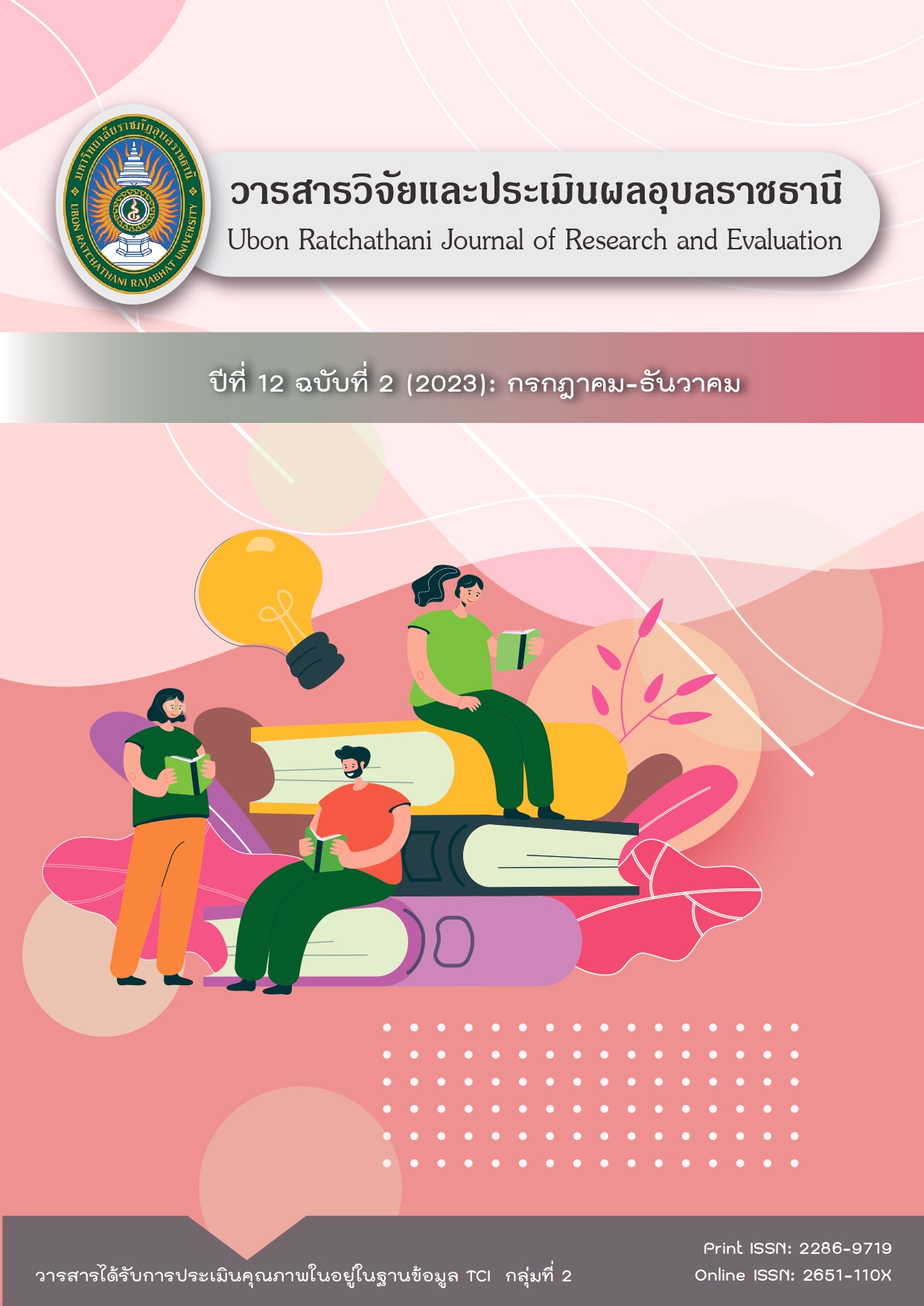The Development of Learning Activities for Creative Arts Subject Using Gamification Promote to Sense of Designer and Creation of Art Works of Vocational Certificate Student in Design Major, Ayutthaya Vocational College
Learning Activities, Gamification, Art Works, Designer
Keywords:
Learning Activities, Gamification, Art Works, DesignerAbstract
The purpose of this research were to 1) Develop learning activities in the Art Creativity course using gamification for being designers and creative works of vocational certificate students in the field of design. 2) Experimenting with learning activities in the Art Creativity course. using gamification to promote designers and creative works of vocational certificate students in the field of design. Sample Obtained by a purposive sampling method, for example, vocational certificate students Level 1, Department of fine arts in Design major, Ayutthaya Vocational College. Research tools include: Learning activities in the Art Creativity course using gamification to promote designers and creative works, Assessment of learning activities, Creative work appraisal form, Designer Behavior Observation Form. Satisfaction questionnaire Data were analyzed using percentage, mean and standard deviation.
The research findings were as follows:
- The results of the quality of learning activities in the Art Creativity course using gamification of vocational certificate students in the field of design at a high level.
- Evaluation results of creative works of vocational certificate students in the field of design. at a high level.
- Observational results of designer behavior of vocational certificate students in the field of design. The overall at a high level.
4. The results of the questionnaire on the satisfaction of vocational certificate students in the field of design on learning activities in the creative arts course using gamification The overall at a high level
References
จิราภร คุ้มมณี. (2561). การเรียนรู้แบบสะตีมเกมมิฟิเคชั่น เพื่อเสริมสร้างทักษะด้านนวัตกรรมสร้างสรรค์ ของนวัตกรอาชีวศึกษา. วารสารวิชาการมหาวิทยาลัยการจัดการและเทคโนโลยีอีสเทิร์น. (น.162-177). อุบลราชธานี: มหาวิทยาลัยการจัดการและเทคโนโลยีอีสเทิร์น.
ชุลีพร ศรีไชยวาน. (2542). เปรียบเทียบผลการให้คำปรึกษาแบบกลุ่ม และการฝึกสมาธิแบบอาณาปานสติ ที่มีต่อความพึงพอใจในชีวิตผู้สูงอายุ. วิทยานิพนธ์ ปริญญาการศึกษามหาบัณฑิต สาขาวิชาจิตวิทยาการแนะแนว มหาวิทยาลัยบูรพา.
ประชิด ทิณบุตร. (2554). นักออกแบบคือใคร (Who is The Designer?). ค้นเมื่อ 26 มกราคม 2563, จาก http://productdesigntheory.blogspot.com
ยุทธพงษ์ สืบภักดี. (2553). คุณสมบัติของนักออกแบบที่ดี. ค้นเมื่อ 26 มกราคม 2563, จาก http://www.yuttapong.com/?p=257
วิรุณ ตั้งเจริญ. (2539). การออกแบบ. กรุงเทพฯ: โอเดียนสโตร์.
สํานักงานคณะกรรมการการอาชีวศึกษา. (2562). แผนพัฒนาการอาชีวศึกษา พ.ศ. 2560-2579. ค้นเมื่อ 26 มกราคม 2563, จาก https://www.lpc.ac.th
สํานักงานคณะกรรมการการอาชีวศึกษา. (2562). หลักสูตรประกาศนียบัตรวิชาชีพ พุทธศักราช 2562 ประเภทวิชาศิลปกรรม สาขาวิชาการออกแบบ. ค้นเมื่อ 26 มกราคม 2563, จาก http://bsq.vec.go.th/Portals/9/Course/20/2562/20300/20302v2.pdf
สำนักมาตรฐานและคุณภาพอุดมศึกษา. (2557). คู่มือการประกันคุณภาพการศึกษาภายใน ระดับอุดมศึกษา ฉบับปีการศึกษา 2557. ค้นเมื่อ 26 มกราคม 2563, จาก http://www.mua.go.th/users/bhes/DATA%20BHES2558/upload%20file%20IQA/iqa%20manual2557.pdf
อารี สุทธิพันธุ์. (2524). การออกแบบ. (ม.ป.ป.). ผู้แต่ง.
Designerhub (2558). 7 แนวทางสู่การเป็นนักออกแบบที่ประสบความสำเร็จ. ค้นเมื่อ 26 มกราคม 2563, จาก http://www.designerhub.in.th/
Karl M. Kapp. (2012). The Gamification of Learning and Instruction : game-based Methods and strategies for training and education. San Francisco: Pfeiffer
Yu-Kai Chou. (2013). Actionable Gamification Beyond Points, Badges, and Leaderboards. CA, USA: Octalysis Media.
Downloads
Published
How to Cite
Issue
Section
License
Copyright (c) 2023 Ubon Ratchathani Journal of Research and Evaluation

This work is licensed under a Creative Commons Attribution-NonCommercial-NoDerivatives 4.0 International License.
1. บทความที่ตีพิมพ์ในวารสารนี้ได้มีการตรวจสอบการลอกเลียนงานวรรณกรรมแล้ว ไม่เกินร้อยละ 25
2. บทความที่ตีพิมพ์ในวารสารนี้เป็นข้อคิดเห็น ข้อค้นพบของผู้เขียนบทความ โดยผู้เขียนบทความต้องเป็นผู้รับผิดชอบต่อผลทางกฎหมายใด ๆ ที่อาจเกิดขึ้นจากบทความนั้น ๆ
3. บทความ ข้อมูล เนื้อหา รูปภาพ ฯลฯ ที่ได้รับการตีพิมพ์ในวารสารวิจัยและประเมินผลอุบลราชธานี ถือเป็นลิขสิทธิ์ของวารสารวิจัยและประเมินผลอุบลราชธานี หากบุคคลหรือหน่วยงานใดต้องการนำทั้งหมดไปเผยแพร่ต่อหรือเพื่อกระทำการใดๆ จะต้องได้รับอนุญาตเป็นลายลักษณ์อักษรจากวารสารวิจัยและประเมินผลอุบลราชธานีก่อนเท่านั้น และจะต้องมีการอ้างอิงวารสารวิจัยและประเมินผลอุบลราชธานี ฉบับนั้น ๆ ด้วย






